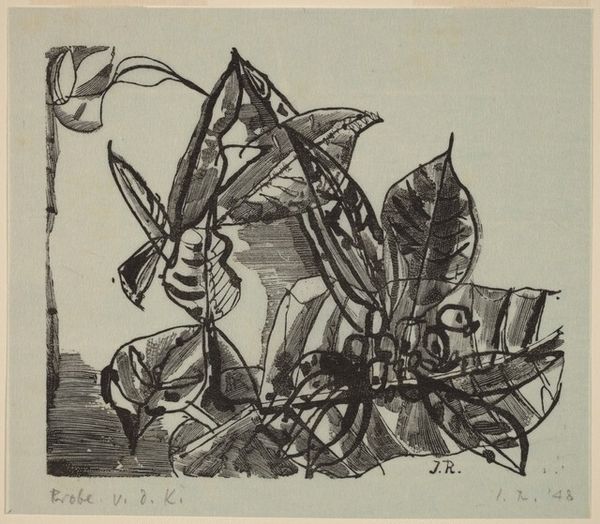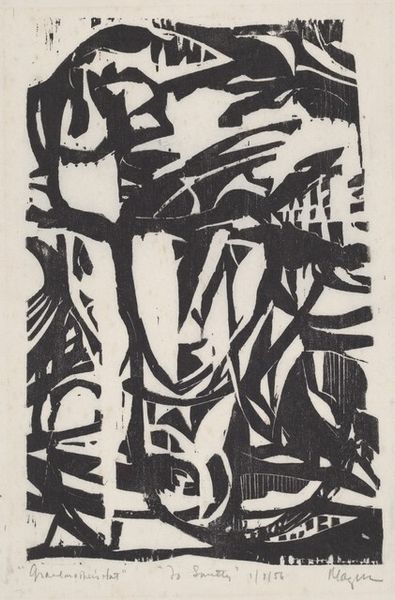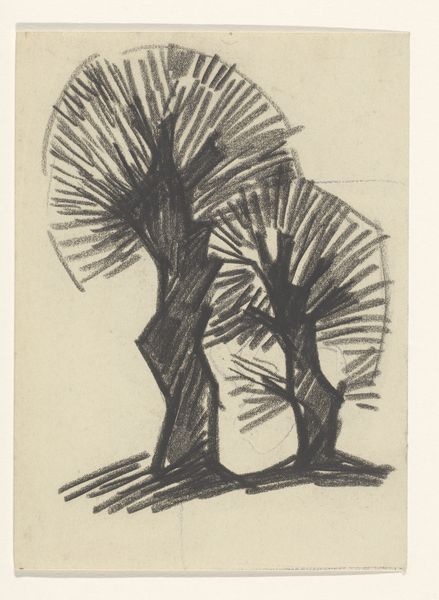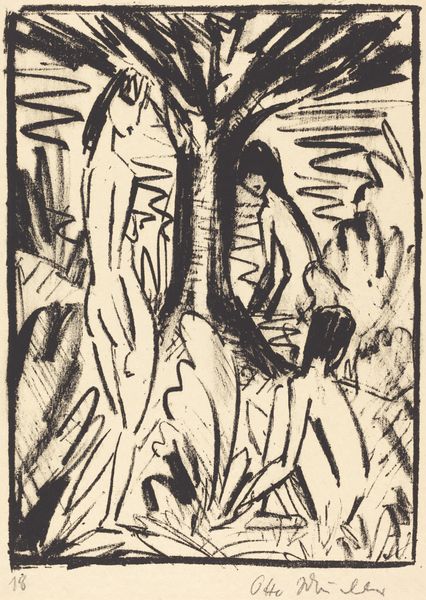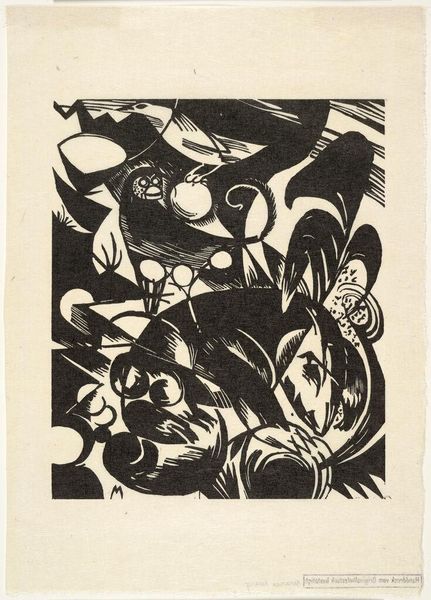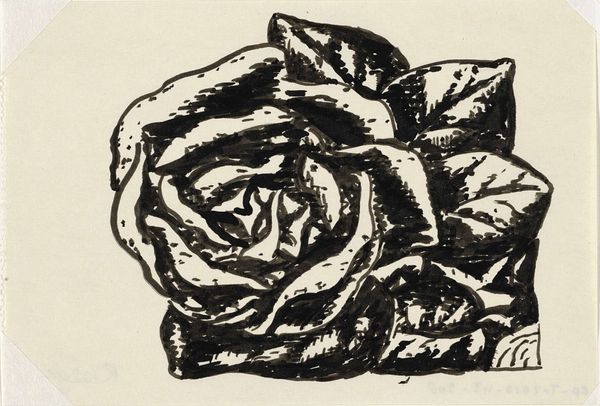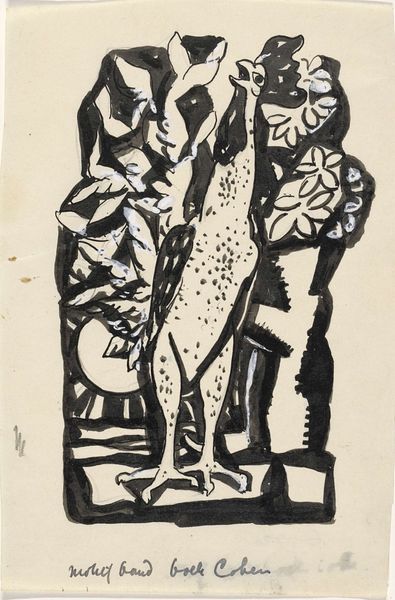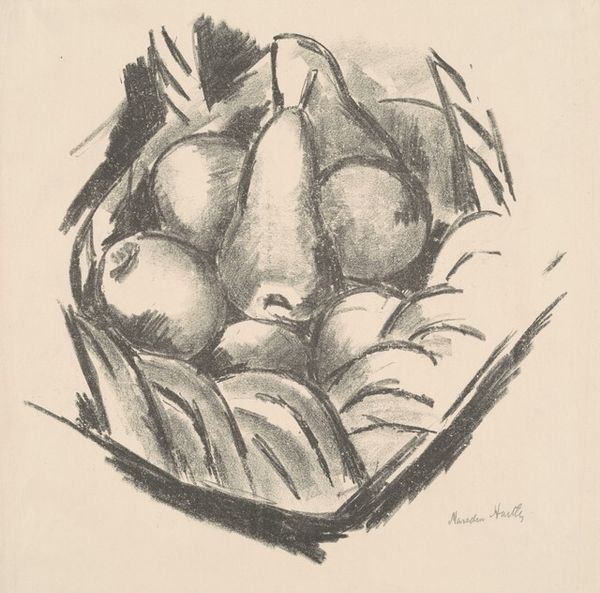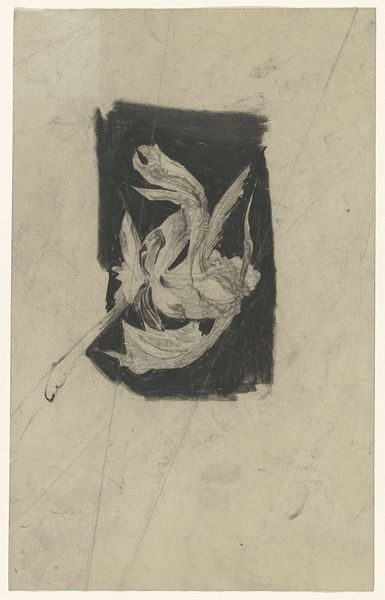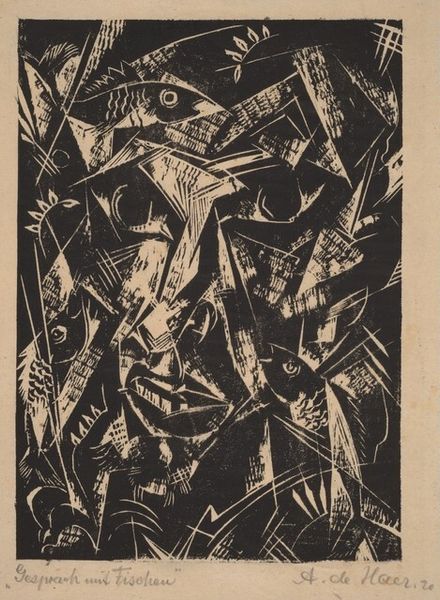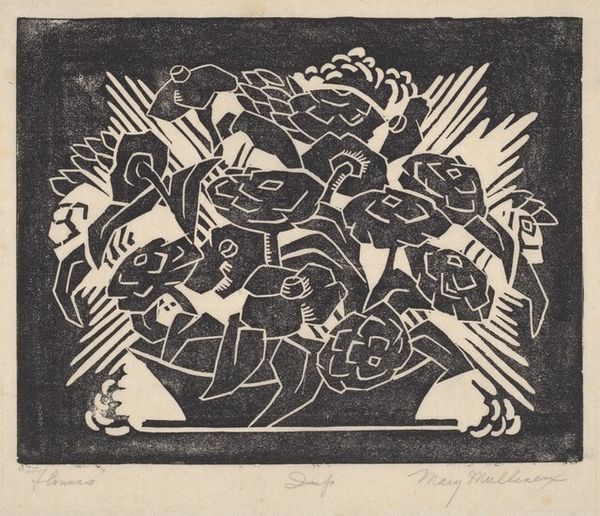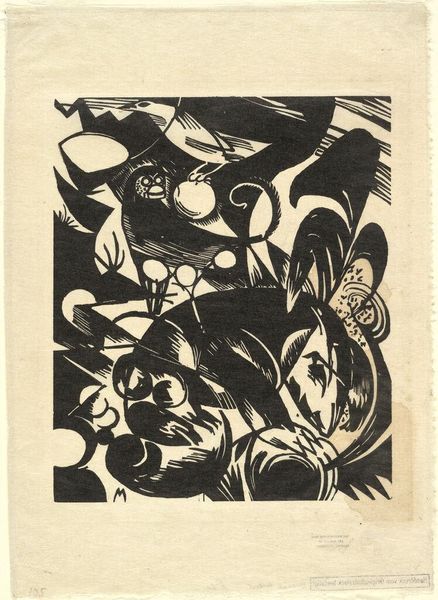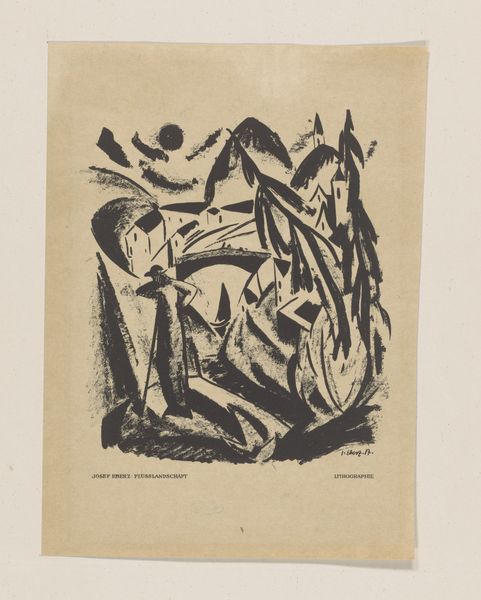
drawing, paper, ink, pen
#
drawing
#
quirky sketch
#
shading to add clarity
#
pen sketch
#
old engraving style
#
flower
#
paper
#
personal sketchbook
#
ink
#
ink drawing experimentation
#
geometric
#
pen-ink sketch
#
pen work
#
sketchbook drawing
#
pen
#
sketchbook art
Dimensions: height 134 mm, width 92 mm
Copyright: Rijks Museum: Open Domain
Editor: Here we have Leo Gestel’s "Bloemen," a drawing done between 1934 and 1936, currently held at the Rijksmuseum. It's rendered in ink on paper, and something about the boldness of the linework makes it feel almost graphic and a little bit unsettling for a floral piece. What are your thoughts on it? Curator: Well, immediately I'm drawn to how this drawing speaks to the changing role of floral imagery during that period. While flower paintings were traditionally symbols of beauty and even moral virtue, by the interwar period, we start seeing artists using them to explore more complex themes. Gestel's bold lines and near abstraction disrupts the familiar sentimentality, doesn’t it? Editor: It definitely does. It's not your typical delicate floral study. Did the social context have anything to do with it? Curator: Absolutely. Think about the historical backdrop: the rise of industrialization, growing anxieties about political instability, and the changing role of the artist in society. Could it be argued that Gestel uses this traditional genre to reflect those anxieties, creating an image that is both familiar and alienating? Do you see how he simplifies and almost distorts the natural forms? Editor: Yes, I see what you mean. The geometric shapes and stark contrasts feel almost…modern, like he's pulling the flowers apart and reassembling them. Curator: Precisely! And it is worth considering how institutions like the Rijksmuseum contribute to shaping how we view pieces like this today. They decide what’s worthy of preservation, which impacts what narratives are perpetuated, and which are perhaps, overlooked. Does viewing it here influence your understanding? Editor: That’s a great point. Seeing it here definitely lends it more importance. I hadn’t thought about that. This discussion has completely shifted my initial reaction to the artwork; I'm seeing so many new layers of meaning. Curator: It’s amazing how just looking at an artwork through a different lens makes it appear new. There’s always a fascinating interaction between art, its era, and our present perspective.
Comments
No comments
Be the first to comment and join the conversation on the ultimate creative platform.
